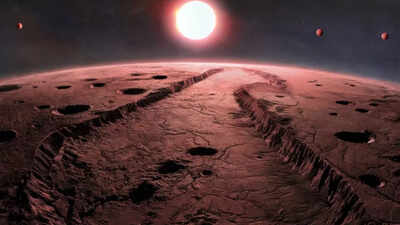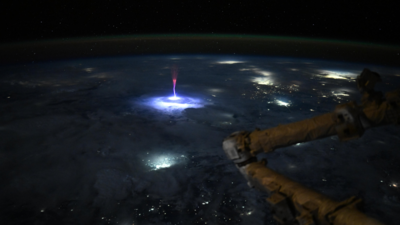Scientists discover four Earth-like planets orbiting Barnard’s Star |

In the first for the exoplanetary community, scientists have announced four new small Earth-like planets around Barnard’s Star, just six light-years from our world. The four planets are all smaller than Earth but share one thing in common: all of them are rocky, similar to Earth.
The discovery of these four tiny, terrestrial planets surrounding Barnard’s Star is a significant leap for exoplanetary science and the search for life beyond Earth in the universe. While these planets are not able to sustain life due to the adversarial conditions there, they are indicative of the types of planets that exist within our galactic community and what possibilities exist for life in the galaxy. With our technology and knowledge improving, finds like this bring us one step closer to solving the ancient enigma: Are we alone in the universe?
Four Earth-like planets discovered orbiting Barnard’s star
Barnard’s Star is a red dwarf and our closest single star to Earth, other than the stars of the Alpha Centauri system. Due to its proximity, it is a first option for study by astronomers since planets orbiting around it may hold the key to conditions in our universe.
Poll
Do you believe the discovery of small Earth-like planets near Barnard’s Star increases the chances of finding life beyond Earth?
The planets near Barnard’s Star are interesting in the sense that they are quite similar to the Earth, especially in terms of their composition. This does make them very attractive to scientists even though they are small compared to the Earth.
Smallest exoplanets detected via radial velocity method
The planets, b, c, d, and e, are extremely small with a mass that is 20% to 30% as massive as that of the Earth. The planets are the smallest ones yet to be found by the radial velocity technique, which is to say that the astronomers take measurements of the “wobble” or the gravitational tug a planet exerts on a star. The method allows researchers to infer the presence of planets from observations of very slight movements of the star produced by gravitational pulls of the planets when moving in circles around the star.
Advanced technology enables detection of small exoplanets
Advanced astronomical equipment facilitated the discovery. Two basic technologies were crucial: the MAROON-X instrument on the Gemini North telescope in Hawaii and the ESPRESSO spectrograph on Chile’s Very Large Telescope. These technologies enabled researchers to measure very small variations in the light being emitted by Barnard’s Star. These result from the gravitational forces provided by the planets, although these signals are far too weak and easily drowned out with noise by their respective stars.
Rocky planets near Barnard’s Star are too hot for life but vital for scientific study
The planets revolve around Barnard’s Star in closely grouped radii. The inner planet takes more than two days to orbit, and the outer planet seven days to circulate around it. This would lead one to assume that the worlds are highly likely to be too hot to harbor life since they are much closer to their star compared to how close Earth is to the Sun.
This is not the sole reason, though. Their rocky composition (similar to that of the Earth) is a significant factor to consider. Rocky planets are also crucial in the quest for life beyond Earth in the universe since if circumstances are right, they will harbor life, if any.
Barnard’s star planets: Understanding habitability in other star systems
Though these planets are not expected to support life because of their closeness to Barnard’s Star, they should be taken into account when searching for alien life. Low-mass rocky planets—those that fall within the “habitable zone” of their star (that distance range wherein liquid water could exist)—are good candidates for life. Even though these specific planets themselves do not fall under this categorization, the discovery of these planets contributes to the proof required in the future to be qualified for the pursuit of life elsewhere in the universe beyond our home planet Earth.
The research, published in The Astrophysical Journal Letters, was conducted by University of Chicago undergraduate Ritvik Basant and an international group of researchers. The discovery is one step toward understanding more about our cosmic neighborhood and hints at the possibility in the future to look for distant planets that may have Earth-like features, for example, having low mass and being rocky.
Also Read | Is our reality a simulation? Researcher claims to have discovered the universe’s source code






